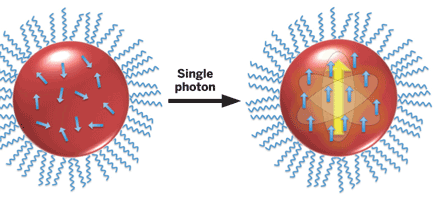
2009 Archive
December 31, 2009A Twist on Tumour Targeting For more information, check out their Nature Materials article which even made the cover page; as well as Jon Dobson's commentsabout this excellent paper. Magnetic Fluid / Nanoparticle Hyperthermia Testing System MagForce Nanotechnologies Reaches Primary Study Endpoint in Pivotal Glioblastoma Hyperthermia Study Berlin - MagForce Nanotechnologies AG has successfully completed its single-arm clinical trial on the efficacy of thermotherapy using superparamagnetic nanoparticles in patients with recurrent glioblastoma. The primary study endpoint, which was to extend the median survival time following tumor recurrence by three months compared to a historical control group, was significantly exceeded in the actual results. The 59 patients evaluated to determine the clinical efficacy of treatment with Nano-Cancer%uFFFD therapy with accompanying radiotherapy attained a median survival time following diagnosis of the first tumor recurrence of 13.4 months* (99% confidence interval: 9.7-17.1 months). Compared to the 6.2-month median survival time* following recurrence observed in a recently published EORTC study with a total of 573 patients**, the survival time with Nano-Cancer%uFFFD therapy is statistically highly significant longer (p-value < 0.01). The results of the clinical trial will now form the basis for the conformity assessment procedure required under the German Medical Devices Act (Medizinproduktegesetz). The product file should be submitted as planned by year end to %u201CMEDCERT Zertifizierungs- und Pr%uFFFDfungsgesellschaft f%uFFFDr die Medizin GmbH%u201D, a notified body for the certification of medical devices. Following successful completion of the conformity assessment procedure for Nano-Cancer%uFFFD therapy and EC type testing of the magnetic field applicator, MagForce will be able to market its Nano-Cancer%uFFFD therapy throughout the European Union. To find out more, check here. Useful New Technique for Nanoparticle Analysis CytoViva's proprietary, advanced optical microscope system creates a high contrast, high signal-to-noise ratio, darkfield-based image and seems to be useful even for the analysis of magnetic Fe2O3 particles, see below or here. The biomedical attraction of magnetic nanoparticles Think small, win big. That's the headline message coming across loud and clear in the latest video feature on physicsworld.com exploring the biomedical applications of magnetic nanoparticles, a multidisciplinary field of endeavour that's witnessed rapid growth over the past five years. Just press "play" on the video Q&A with Kevin O'Grady, professor of physics at the University of York, UK, for an engaging overview that covers the fundamental science of magnetic nanoparticles as well as looking ahead to the delivery of real-world diagnostic and therapeutic nanoparticle technologies. For a few more interviews and a couple of new papers, check out http://www.iop.org/EJ/journal/-page=extra.nanomag/0022-3727. Elusive %u2019Magnetic Monopole%u2019 Found at NIST Any child can tell you that a magnet has a %u201Cnorth%u201D and a %u201Csouth%u201D pole, and that if you break it into two pieces, you invariably get two smaller magnets with two poles of their own. But scientists have spent the better part of the last eight decades trying to find, in essence, a magnet with only one pole. A team working at the National Institute of Standards and Technology (NIST) has found one. %u201CThese are not the monopole particles Dirac predicted%u2014ours are huge in comparison%u2014but they behave like them in every way,%u201D said Jeff Lynn, a NIST physicist. %u201CTheir properties will allow us to test how theoretical monopole particles should behave and interact.%u201D To find out more, read here. A New Attraction - Now Even Useful for the Chemists! Read more about companies such as TurboBeads, Strem Chemicals, BASF which have big plans with these new applications here. Richard Gaster, Sanjiv Gambhir, Shan Wang et al. report how they have used a combination of established techniques to devise an ultra-sensitive assay that detects biomarker proteins associated with disease or metabolic states. Their pioneering approach uses magnetic signals to overcome the effects of the biological matrix, the host of compounds found in all biological samples that cause interference in assays. The sensitivity of the authors%u2019 technique is 1,000 times better than the current gold-standard method, the enzyme-linked immunosorbent assay (ELISA). A comment about this paper has also been posted in the Nature of Medicine issue. Philips and Bruker BioSpin Form MPI Partnership Philips Healthcare and preclinical technology developer Bruker BioSpin have inked a memorandum of understanding to develop magnetic particle imaging (MPI) scanners for the preclinical market. Under the terms of the deal, Bruker BioSpin said it intends to develop and manufacture MPI scanners designed for preclinical use at its facilities in Ettingen, Germany. Both firms will co-market the resulting product. MPI uses the magnetic properties of iron-oxide nanoparticles to produce 3D images of nanoparticle concentration after injection into the bloodstream, according to Philips of Andover, MA, and Bruker BioSpin. The companies believe the development of MPI technology will help researchers gain new information on disease processes at the organ, cellular, and molecular level. Facile Synthesis of Superparamagnetic Fluorescent Fe3O4/ZnS Hollow Nanospheres A very simple strategy for the synthesis of superparamagnetic and fluorescent Fe3O4/ZnS hollow nanospheres is presented. These hollow nanospheres are not only nontoxic with a highly porous shell and have diameters of <100 nm but also exhibit very good magnetic resonance and fluorescence. Take a look at it here. Cobalt Generates Magnetic Polymer By incorporating a monomer with a cobalt ligand into a block copolymer, researchers have produced a magnetic material that could vastly increase the density of information storage.Gregory N. Tew, professor of polymer science and engineering at the University of Massachusetts, Amherst, reported the material on Aug. 17 at the ACS national meeting in Washington, D.C. This seems to be the first report of a processible, ferromagnetic polymer which is prepared at room temperature and is magnetic at room temperature. By contrast, Tew said, a homopolymer formed solely from the cobalt-containing monomer is not magnetic. "As far as I know, this is the first report of a ," commented University of Bristol chemistry professorIan Manners, who has studied metal-containing polymers for almost 20 years. Quantum Dots Can Be Magnetized by Light Scientists have discovered that chemically prepared, impurity-laced quantum dots can spontaneously line up their magnetic fields with the application of light. Notably, this process can occur at up to room temperature. Chemistry professor Daniel R. Gamelin of the University of Washington, Seattle, and colleagues there and at the University of Duisburg-Essen, in Germany, doped cadmium-selenide quantum dots with manganese, then bombarded them with laser light, causing the dots to generate large magnetic fields. Take a look at the original article here. Researchers Say Magnetized Stem Cells May Be Used to Treat Heart Attacks BBC News (8/17) reported that "heart attacks and other vascular injuries could eventually be treated using regular injections of magnetised stem cells," according to research published in the Journal of the American College of Cardiology: Cardiovascular Interventions. The UK's Daily Mail (8/18, Derbyshire) reports that, "in the groundbreaking experiment, stem cells were 'tagged' with microscopic magnetic particles and" were "then injected into the bloodstream of rats suffering artery damage." Physicians "used a magnet outside the body to guide the cells into position -- allowing them to repair and restore damaged blood vessels." The UK's Telegraph (8/18, Smith) quotes senior study author Dr. Mark Lythgoe, of the UCL Centre for Advanced Biomedical Imaging, as saying, "Because the material we used in this method is already approved, we could see this technology being applied in human clinical trials within three to five years.'" Dr. Lythgoe added, "It's feasible that heart attacks and other vascular injuries could eventually be treated using regular injections of magnetised stem cells." Take a look at it here. New IEEE Magnetics Newsletter is Available To get a bigger picture of magnetism and its many uses, you might want to read the latest edition of the IEEE Magnetics Society Newsletter. Take a look at it here. Iron Pnictides - Key to High Temperature Superconductivity? To learn more, click here. Cleaning of Antique Pictures with Magnetic Nanoparticles For more information, please check here. Viruses can be used as biological templates for nanoscale heterostructures without the need for extensive genetic engineering, a group led by Raymond E. Schaak of Pennsylvania State University reports (Chem. Mater., DOI: 10.1021/cm900869u). Schaak and colleagues took advantage of nonspecific electrostatic interactions along the body of the M13 bacteriophage, a filamentous virus that infects bacteria, to nucleate rhodium nanoparticles and coat the length of the phage with Rh. Having previously selected a phage with a peptide at the tip that preferentially binds Fe3O4, the researchers then added Fe3O4 particles to the head of the phage. The combined modifications turned the phage into a magnetically separable catalyst, with the rhodium able to hydrogenate styrene to ethylbenzene and the Fe3O4 contributing magnetic properties. The approach provides a straightforward platform for designing site-directed multifunctionality into commercially available M13 bacteriophage and serves as a simple method for introducing multicomponent architectures into phage-based scaffolds. New Commercial System for Improved Gene Transfection http://www.nanotherics.com/products.html A Colourful Future for MRI Check out their original Nature article or what Richard Bowtell had to say about their work. Magnetic Backpacks for Cells? For more information, check here.
December 25, 2009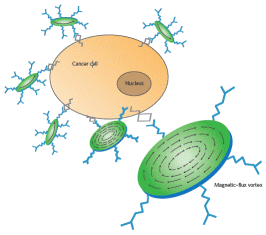
December 17, 2009
Whilst availability of magnetic nanoparticles, and their use, is significantly increasing, until now there has been no commercially available system to enable hyperthermia testing of these particles in specific applications at a range of relevant frequencies and field strengths.  nanoTherics has now made available for purchase the magneTherm AC system, a unique device enabling magnetic fluid / nanoparticle hyperthermia testing at a range of user-configurable frequencies from 70 kHz up to 1,000 kHz, the optimum range for in vivo applications. Since the heating capacity of magnetic nanoparticles will vary, depending on size, shape and material properties, it is critical to be able to evaluate heating capacity over this range of frequencies.
nanoTherics has now made available for purchase the magneTherm AC system, a unique device enabling magnetic fluid / nanoparticle hyperthermia testing at a range of user-configurable frequencies from 70 kHz up to 1,000 kHz, the optimum range for in vivo applications. Since the heating capacity of magnetic nanoparticles will vary, depending on size, shape and material properties, it is critical to be able to evaluate heating capacity over this range of frequencies.
For more information, check out nanoTherics' website.
November 22, 2009
** Stupp et al., Lancet Oncol 2009; 10:459-66
November 30, 2009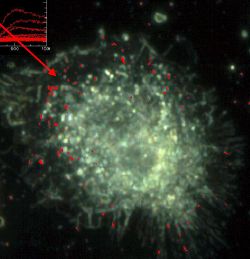 The system enables fast, easy observation of a wide range of nanoscale materials as well as live cells and pathogens. When utilized with its Dual Mode Fluorescence Module (DMF), the CytoViva microscope also provides the ability to observe multiple fluorescent signals and non-fluorescent sample structure simultaneously and in real time. The CytoViva Hyperspectral Imaging System attaches to the CytoViva Microscope System and serves to validate the presence of a wide range of nano-scale materials and biologicals. Operating in the visible near infrared (VNIR) range, this system captures and records the spectrum within each pixel of the field of view, enabling spectral analysis of a selected region or single pixel within the sample. For more information please visit www.cytoviva.com.
The system enables fast, easy observation of a wide range of nanoscale materials as well as live cells and pathogens. When utilized with its Dual Mode Fluorescence Module (DMF), the CytoViva microscope also provides the ability to observe multiple fluorescent signals and non-fluorescent sample structure simultaneously and in real time. The CytoViva Hyperspectral Imaging System attaches to the CytoViva Microscope System and serves to validate the presence of a wide range of nano-scale materials and biologicals. Operating in the visible near infrared (VNIR) range, this system captures and records the spectrum within each pixel of the field of view, enabling spectral analysis of a selected region or single pixel within the sample. For more information please visit www.cytoviva.com.
November 16, 2009
November 5, 2009
October 31, 2009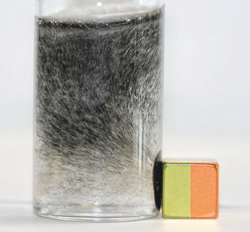 The Chemical & Engineering News, which is the weekly news magazine of the American Chemical Society, just published an article about magnetic particles and the newest companies involved in making them. The new target audience of strongly magnetic iron and cobalt particles with carbon coatings that give them "astonishing stability" are the chemists who can now start to use magnetic particles for cleaning up reactions and recover products without additional purification steps.
The Chemical & Engineering News, which is the weekly news magazine of the American Chemical Society, just published an article about magnetic particles and the newest companies involved in making them. The new target audience of strongly magnetic iron and cobalt particles with carbon coatings that give them "astonishing stability" are the chemists who can now start to use magnetic particles for cleaning up reactions and recover products without additional purification steps.
Matrix-Insensitive Protein Assays Push the Limits of Biosensors in Medicine
October 26, 2009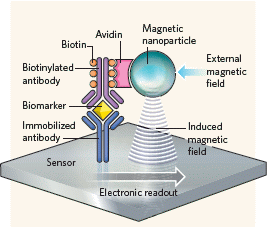 The ultra-sensitive nanoscale sensor that detects biomarker proteins. Antibodies on the surface of the sensor specifically trap the biomarker of interest from a sample. The sensor is then washed with a solution containing more antibodies, which also bind specifically to the biomarker. These antibodies are tagged with biotin molecules, which bind to the protein avidin. When avidincoated magnetic nanoparticles are passed over the GMR sensor, they bind to the biotinylated antibody. The sensor is activated by applying an external magnetic field. This induces a magnetic field in the nanoparticles, which causes an electronic response in the sensor that correlates with the number of bound nanoparticles.
The ultra-sensitive nanoscale sensor that detects biomarker proteins. Antibodies on the surface of the sensor specifically trap the biomarker of interest from a sample. The sensor is then washed with a solution containing more antibodies, which also bind specifically to the biomarker. These antibodies are tagged with biotin molecules, which bind to the protein avidin. When avidincoated magnetic nanoparticles are passed over the GMR sensor, they bind to the biotinylated antibody. The sensor is activated by applying an external magnetic field. This induces a magnetic field in the nanoparticles, which causes an electronic response in the sensor that correlates with the number of bound nanoparticles.
September 24, 2009
September 5, 2009
September 5, 2009
September 5, 2009
August 19, 2009
July 7, 2009
July 25, 2009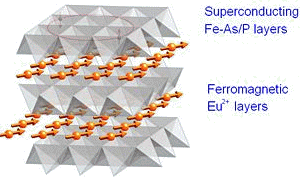 The discovery that compounds known as iron pnictides can superconduct at 50 degrees above absolute zero has reignited physicists' quest for better high-temperature superconductors and may offer clues to unlocking a 20-year mystery.
The discovery that compounds known as iron pnictides can superconduct at 50 degrees above absolute zero has reignited physicists' quest for better high-temperature superconductors and may offer clues to unlocking a 20-year mystery.
June 24, 2009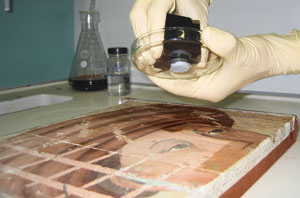 By enlisting magnetic nanoparticles, Baglioni, a chemistry professor at Italy's University of Florence, has created a material that can soak up cleaning solutions or microemulsions; squeeze them out onto the surface of a painting, fresco, or sculpture; and then reabsorb them without a human hand ever coming into contact with the delicate artwork.
By enlisting magnetic nanoparticles, Baglioni, a chemistry professor at Italy's University of Florence, has created a material that can soak up cleaning solutions or microemulsions; squeeze them out onto the surface of a painting, fresco, or sculpture; and then reabsorb them without a human hand ever coming into contact with the delicate artwork.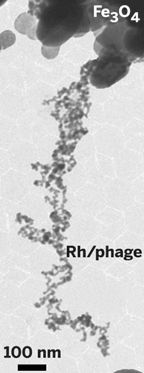 Virus Templates to Make Multifunctional Nanocomposites
Virus Templates to Make Multifunctional Nanocomposites
July 1, 2009
June 24, 2009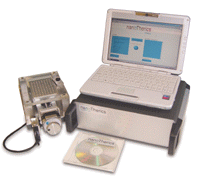 nanoTherics is now selling a new transfection device which provides up to 1,000x higher transfection efficiency compared to the best currently available cationic lipid agents at short transfection times as well as easy scalability and reduced costs .
nanoTherics is now selling a new transfection device which provides up to 1,000x higher transfection efficiency compared to the best currently available cationic lipid agents at short transfection times as well as easy scalability and reduced costs .
The system, which uses oscillating magnets/fields to promote improved particle/DNA uptake into cells, allows flexibility in number, type and scale of transfection. For more information, check it out at
June 24, 2009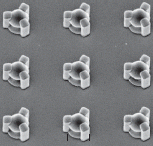 If you have been to our meeting, then this is old information - but it is still hugely exciting. Zabow and colleagues are bringing %u2018colour%u2019 to MRI. They have developed an approach to produce MRI contrast agents with characteristic spectral signals, based on the control of mechanical structures. Different versions of these probes can be used simultaneously, and are distinguishable by the geometry-dependent spectral %u2018colour%u2019 of their signals.
If you have been to our meeting, then this is old information - but it is still hugely exciting. Zabow and colleagues are bringing %u2018colour%u2019 to MRI. They have developed an approach to produce MRI contrast agents with characteristic spectral signals, based on the control of mechanical structures. Different versions of these probes can be used simultaneously, and are distinguishable by the geometry-dependent spectral %u2018colour%u2019 of their signals.
November 12, 2008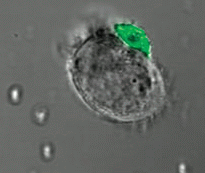 Living cells wearing microscopic "backpacks"--nanostructured polymer patches loaded with chemical cargo--might one day be able to ferry drugs or imaging agents to diseased tissue. MIT researchers say that they have successfully constructed such backpacks, filled them with magnetic particles, and tethered them to the surfaces of immune cells without disrupting the cells' ability to interact with their environment. The work is described in a recent issue of Nano Letters.
Living cells wearing microscopic "backpacks"--nanostructured polymer patches loaded with chemical cargo--might one day be able to ferry drugs or imaging agents to diseased tissue. MIT researchers say that they have successfully constructed such backpacks, filled them with magnetic particles, and tethered them to the surfaces of immune cells without disrupting the cells' ability to interact with their environment. The work is described in a recent issue of Nano Letters.
For more information, check out our Archives.
September 2017
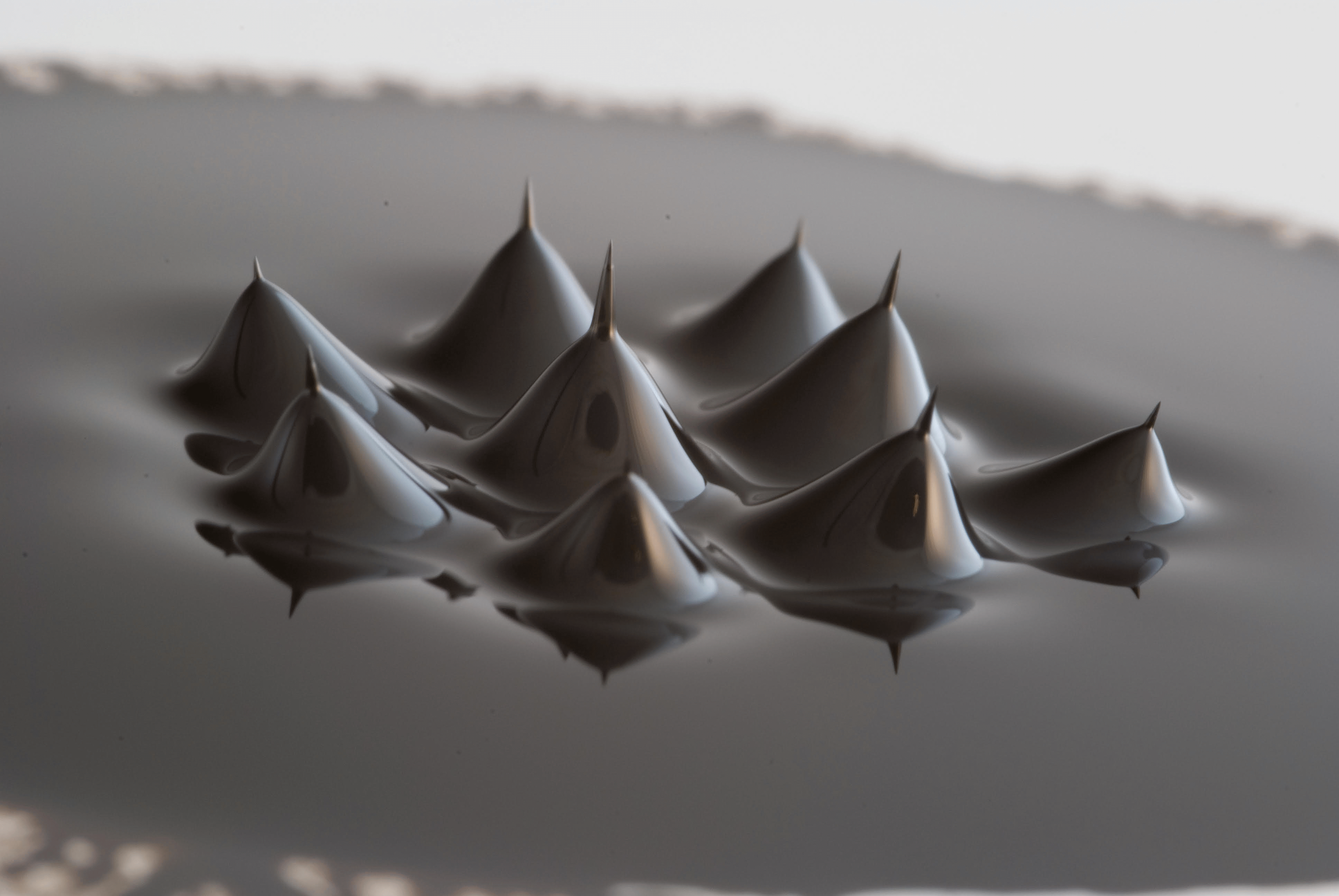
Search this site with the power of



